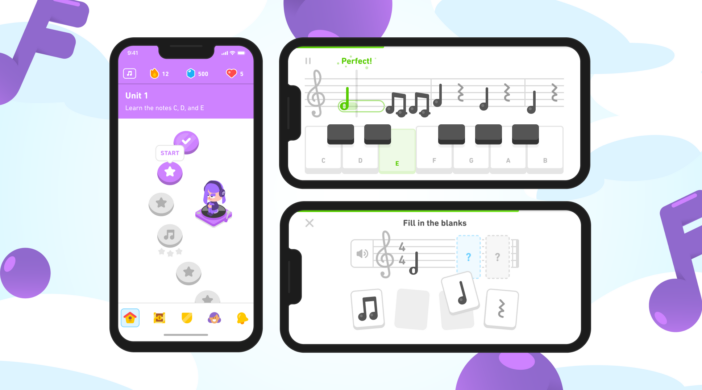In October last year, Duolingo announced it was adding a music course to its suite of languages to learn. The course promised to be free (or freemium, really), rhythm, pitch, notation, and piano keys.
For many months the course was only available for iOS users, then more recently for Android. Despite the obvious advantage of a piano represented on a full-sized laptop or desktop screen and keyboard, there is still no option for learning on such devices. At best one can hope for a larger tablet. In fact, to be quite blunt, it is very difficult to carry out the performance pieces on a mobile phone except in a staccato fashion, and you can just forget about chords.
Whilst the course has many critics, it does do what it says on the tin, more or less. Complaining about the fact that it only teaches piano at this stage is a little unfair, because that’s all that they’ve advertised it as capable of doing. Like any other Duolingo course, if the popularity ramps up, more resources will be available and additional instrumentation is a probable option. A better complaint is that it only teaches part of the piano; the bass clef and hence the grand staff, for example, is entirely absent.
It is is at least fair at teaching basic notation, rhythm, pitch, and listening. Whilst it is not a very good tool for sight reading due to the interface, at least some semblance of that can be gleaned for real practice with a real instrument where linking procedural memory to motor skills will actually occur. It is somewhat better at note length, especially for those lessons that concentrate on timing.
The course lacks theory notes, which are used in most other Duolingo courses to explain grammar. With Duolingo music you’re introduced to a new concept in practice alone (e.g., rests, time signature, measures, crotchet, quaver, etc.) without learning in words what these symbols actually mean. Certainly there is an argument for more practice over theory, but practice to the exclusion of theory will lead to some very poor foundations in the future for the learner. Further, there is an over-emphasis on flat and sharp notes, which make up almost half the course. These could be reduced in quantity with additional basic concepts introduced relatively easily, such as volume dynamics.
Overall however, the course is not terrible but certainly needs work. It is a handy introduction and an addition to other practice and must be supplemented by proper theory. It contains a lot less than expected and manages to do so in a manner that takes up more time than it should. The device restrictions are, of course, part of a general abandonment by application developers to keep up-to-date with old-fashioned people who still prefer more sizeable computers over hand-held devices but this is clearly one example where a hand-held device is simply not going to be good enough. One other thing that course provides: it does give you a sense of where your strengths and weaknesses might be. Whilst I could do reasonably well in rhythm and pitch, I was pleased to discover my critic’s ear, although aged, showed the greatest competence in listening. It reaffirmed an old belief that I’ve had that if I develop any skill in this art, it is most likely to be in composition rather than performance.


Leave a Reply